Late last year, I spent some time with the Shokz OpenFit and was really impressed with the comfort, battery life and sound quality. I was curious though, how their bone conduction units would stack up, and for the last few weeks; my son and I have been using the OpenRun and OpenRun Pro to enjoy music and other media.
OpenRun: Comfortable, connected audio with great battery life
One of the design factors that I’ve struggled with in using headphones of any sort for years is the fact I wear glasses. If the headband is too tight or the padding is a little too hard, then I find them uncomfortable; so I had some reservations about the design of the Shokz OpenRun from the beginning.
My concern was quickly proven to be nothing, as the design lends itself well to wearers with all needs. There’s flexibility in the band, and you can easily position the speaker to ensure that you’ve maximised the comfort levels as you move about.
While I do use them, I’m not a fan of in-ear audio so the fact that these don’t go in my ears was very welcome. The over-ear loop that attaches to the band is very comfortable, and the lightweight nature means that even riding a bike or on a run they don’t become cumbersome.
OpenRun Pro: Comfort and protection
There’s a bit of an upgrade here and, in complete honesty; if you’re going to use them regularly, it’s worth the extra money.
One of the things I really liked about the Pro is the nicely constructed case that will keep them safe; even if they’re getting banged around in your bag during the day. This is particularly useful since the Pro review unit was reviewed by my son, Alex.
As a person with a severe hearing disability, he simply can’t use normal headphones every day. He either has to have them so loud that there’s potential damage to what hearing he has left, can’t hear them, or — due to his hearing aids — can only hear on one side; so I was sceptical as to how effective the bone conduction would be for him.
Wow, just wow!
The first time he tried them on was without either of his hearing aids (A BAHA and Cochlear for those interested, one on each side) on and played some music for him. To our surprise, and joy, he started dancing and singing along to the music.
This is the potentially one of the truest tests of how good the bone conduction is because, without his hearing aids on; Alex would struggle to hear a brass band rehearsing in his bedroom.
After a little bit of testing with the fit, we found that not only was the bone conduction effective, the fit worked around my son’s hearing aids as well. I know that’s a relatively niche need – but it is important, for us at least.
Being the smaller size available, I wasn’t able to test the OpenRun pro audio quality, but there certainly was no complaints and we
Audio with awareness
One of the major selling point for the OpenRun headsets, is maintaining the situational awareness while still enjoying your music. For people who commute on public transport, not necessarily as important but if you’re a bike rider, or running (particularly after dark) then having that awareness is important.
Benefits of bone conduction and open-ear listening
Both the OpenRun and the OpenRun Pro share a few design facets, including the proprietary charger. I’m not unhappy with the proprietary charger as the design undoubtedly contributes to the IP rating (IP55 on the OpenRun Pro, IP67 on the OpenRun) of the devices. Don’t lose the cable, it’ll cost you $24 plus shipping to replace it.
The controls are split between the right and left ear side, with power and volume controls under the right and playback (play/pause) on the left ear; which doubles for answering or hanging up on calls.
Any downside?
This might just be my “make my life simple” complaint, but I’d be happier if they were USB-C charging with a rubberised seal over the charging port. I understand that may cause issues with warranty if people don’t close it correctly; but I’m firmly in the realm of I won’t buy it if it’s not USB-C these days. I like the simplicity of only carrying a couple of cables and one charger!
If you’re someone who really likes high quality audio, these are not for you. But in fairness, that’s not what these type of headphones are about; it’s about continued enjoyment of your media, while maintaining awareness of your surroundings.
The focus is safety.
Should you buys Shokz OpenRun or OpenRun Pro
If you’ve read this far, you’re potentially looking at a set and hopefully you’ve made a decision on what’s been said so far. For me personally, I’ve got a use case when I’m cycling (I’m not built for running…) and recommend these to others without hesitation. It’s great to listen to music while cruising along, and the bonus is you can remain connected if you happen to get a call.
Given the somewhat niche need of these, there’s absolutely a market there and at they’re not ruinous when you look at the pricing:
- $219.00 for the OpenRun Pro
- $169.00 for the OpenRun
The situational awareness of these makes them ideal if you’re out and about walking, running, cycling and need to be aware of your surroundings. Particularly for someone who may run at night, this is a great way to keep the beats pumping, without that safety sacrifice.
The Shokz OpenRun and OpenRun Pro are available via the Shokz website.


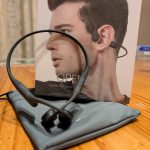

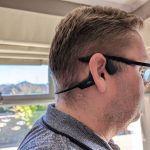


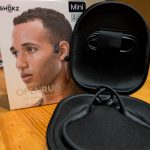
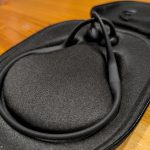


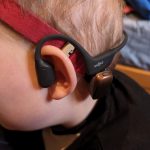
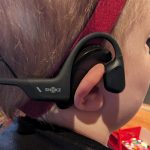
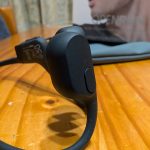
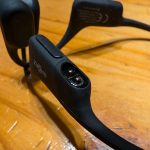




Having owned a Fitbit Charge 6 since early January 2024, I’ve come to appreciate its magnetic pogo pin charging system, as it’s being employed where such a charging system is appropriate. The same looks like it applies for these Shokz headphones. After having had the charging cover of my FRESHeBUDS Pro Magnetic Bluetooth Earbuds fail a few months before the headphones themselves completely failed, I like how Shokz have handled charging for these. I’m not a fan of headphones that hook over the ears, after the issues I had with the mid 2000s Sony StreetStyle headphones not working at all… Read more »